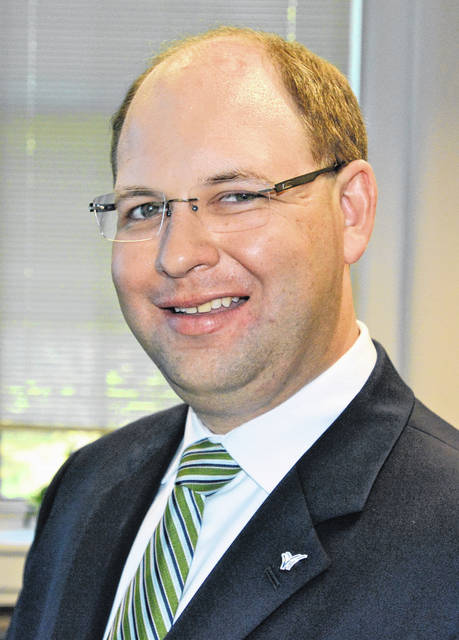
The name Eli Harvey isn’t as well-known in Clinton County as it once was. He is, though, one of our most famous citizens.
But who was he really? And what did he do to become so famous? Some know he was a painter, sculptor, and Quaker, but what else did he do? Why has he been forgotten by many?
Eli Harvey was born September 23, 1860 to William P. and Nancy M. Harvey. They were a Quaker family like so many others in Clinton County.
Eli took a liking to painting so much as a boy that he went to the Art Academy of Cincinnati, which was founded as the McMicken School of Design in 1869.
Eli started painting with instructor Thomas Satterwhite Noble, the first head of the Art Academy. Noble was a large man — bearded and gruff, some might say — but he had enormous talent, and Eli flourished under him.
Eli also studied sculpture with instructor Louis Thomas Rebisso, who was of Italian descent. Eli, though, was not content with staying in Cincinnati; he wanted bigger and better, so he went to Paris, France and began his career.
Far away from his Clinton County home, Eli began to paint, but realized he really wanted to be a sculptor. He studied with the well-known artists of that time, such as Lefebvre, Constant, Doucet, and finally, Frémiet. They taught him texture, molding, and the art of capturing the life-like nature of people and animals.
Eli would become best known for his animal renditions. He would win major awards in Paris that included The Universal Exposition in 1900. He returned to the United States that year a very celebrated person.
Armed now with the tools he needed, Eli took up sculpting all types of animals in very life-like poses, as he called them. He was commissioned for the Lion House at the New York Zoological Park and for two lions at the Eaton family mausoleum in Toronto.
Eli never forgot his roots, though. When the Clinton County Courthouse was commissioned and voted on by the commissioners in 1915, Eli Harvey offered — free of charge — to sculpt bronze lions for the front of the building. The commissioners had agreed to this, but later decided not to move forward.
The pedestals still remain where the lions would have been placed.
His work reached exhibits at both the Pan-American Exposition in Buffalo in 1900 and at the Louisiana Purchase Exposition in St. Louis in 1904. His work was on display at the Panama-Pacific International Exposition in San Francisco in 1915.
He sculpted the bear that stands at Brown University in Rhode Island. One of Harvey’s most popular work of art was a life-sized elk — produced for the Benevolent and Protective Order of Elks at their headquarters — which still stands today.
Today his work lives on in our region. Clinton-Massie Schools play host to a sculpture. There are private collections throughout Clinton County. The Clinton County History Center plays host to the world’s largest collection of Eli Harvey artwork.
Eli Harvey died in Alhambra, California on February 10, 1957. His studio was located there, in the neighborhood known as “artist alley”.”
He befriended a well-known American artist named Norman Rockwell, who depicted Eli in two of his drawings. One was for the Saturday Evening Post. In 2007 Christies Auction House sold one of his works titled Stalking Panther for $17,500.
The name Eli Harvey is starting to fade from our culture. His works of art are less recognizable than they once were, but they are still very important — they can be studied by a new breed of sculptures and painters. They can study his style on how he made wild creatures come to life for millions of people in the world.
The Quaker man from Clinton County, who was supposed to be a farmer and never leave, ended up doing anything but. He traveled the world taking Clinton County, his faith, and his love of life with him.
In every sculpture, a touch of Clinton County is there.
Because of that, he will never be forgotten.
Jonathan McKay is a Clinton County native and a current member of Wilmington City Council.


